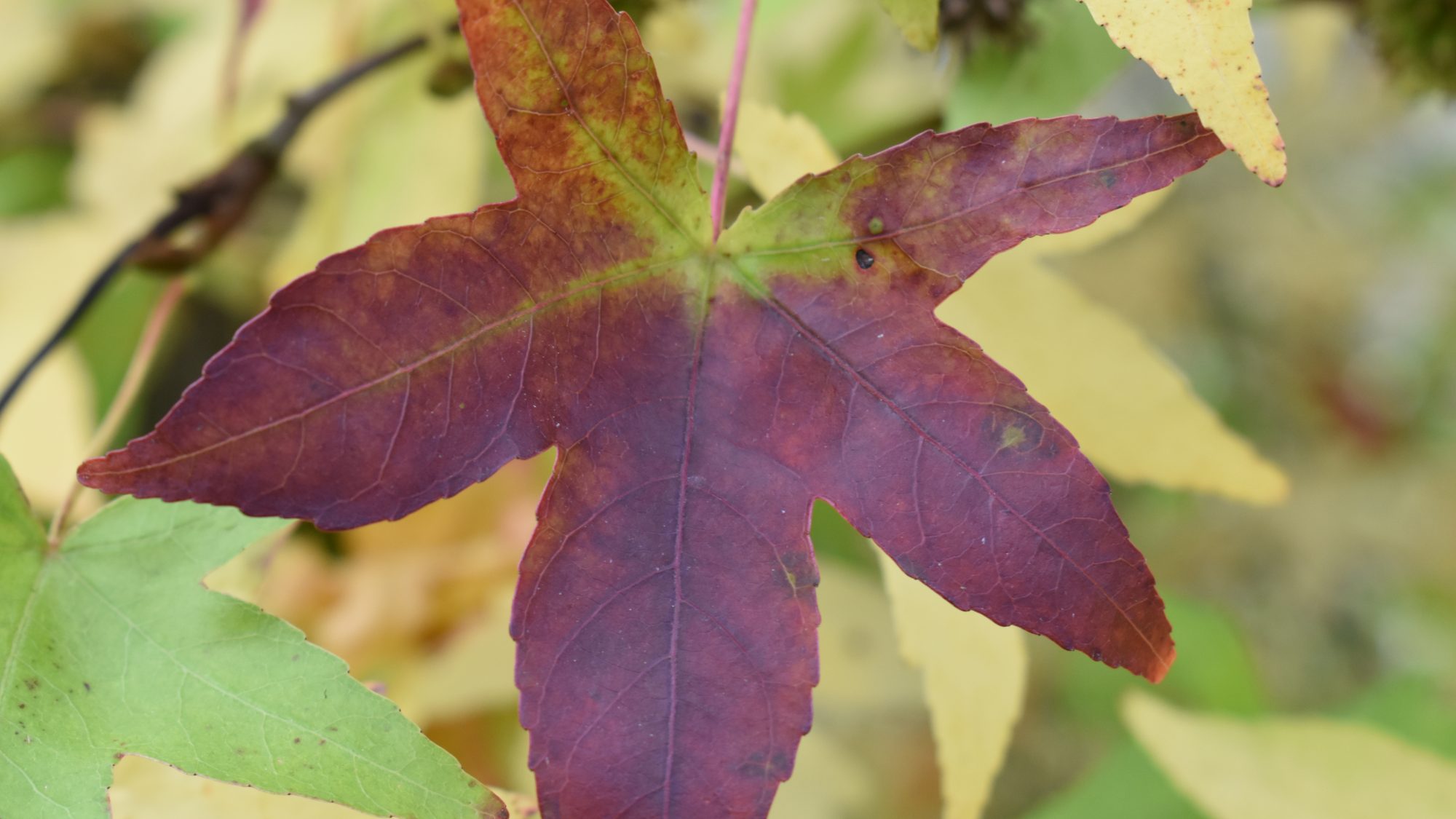The ornamental sweet gum is showing discreet flower and late autumn colour on the northern side of the Lake.
Liquidambar orientalis is a native of western Asia, where it grows in forests in warm zones, and favours moist soils, though it will also grow on dry mountain slopes. Growing to up to 30m it has five-lobed leaves and is often mistaken for a maple (Acer), though has alternate, not opposite leaves. During autumn L. orientalis gradually takes on colour, building from a base of yellow, speckled with reds, to a full wash of deep red colouring. When crushed the leaves emit a sweet, pineapple fragrance. A monoecious species, in which inflorescences of male and female flowers are borne on the same plant, the male flowers are held in a condensed head or spike and the female inflorescences borne on a long stalk and comprising many flowers. The terminal male flowers emerge with the new foliage. The attractive fruits resemble nutty clusters, with each individual seed capsule producing a beak, and these will ripen and remain on the tree well into a second year, so that the previous year’s fruits and the current year’s can be seen together. The common name sweet gum is applied in reference to the resin, or liquid storax, which is produced from the inner bark and which has been used as a remedy for bronchial conditions in treatments such as friar’s balsam.

